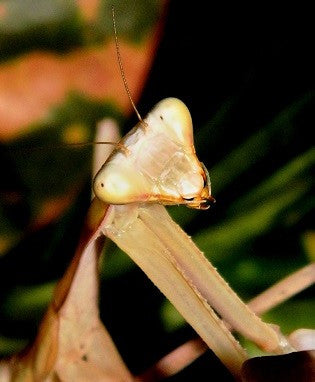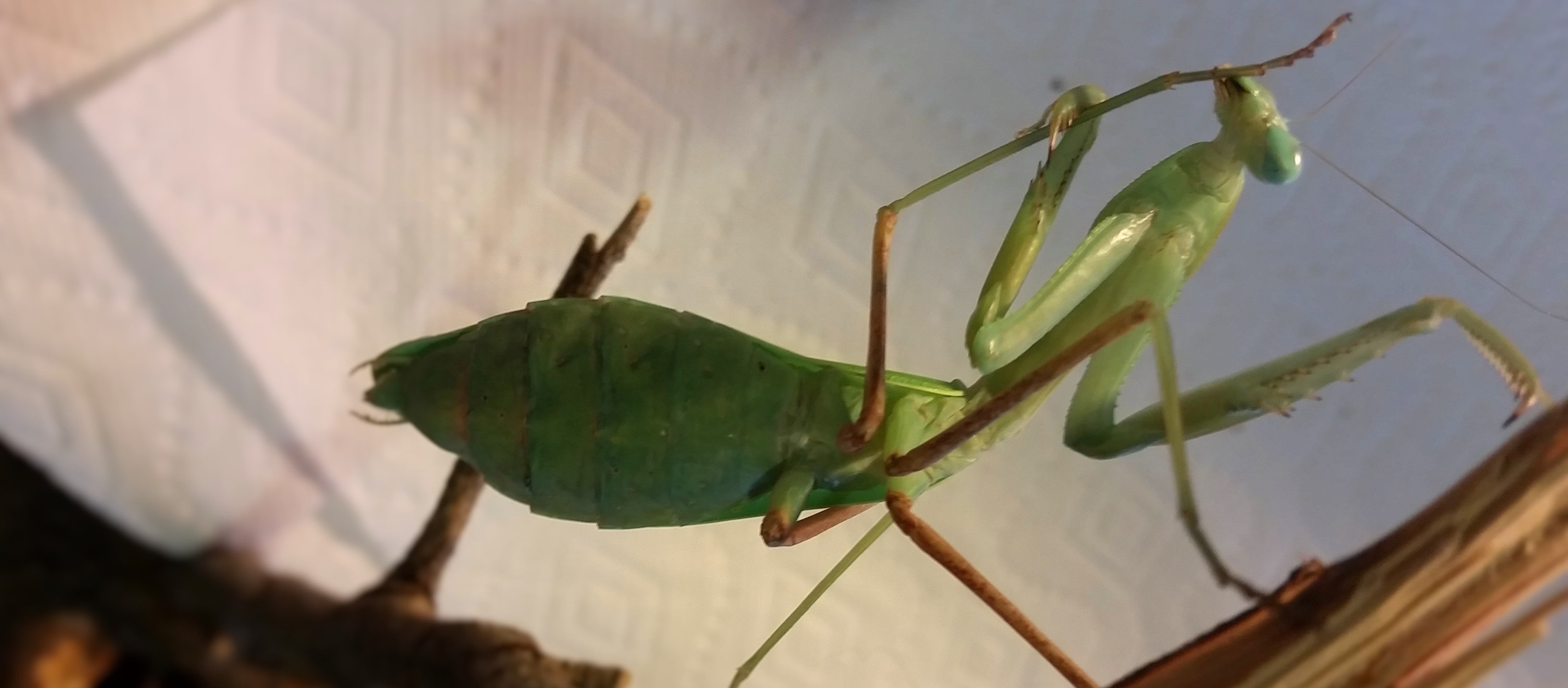Giant Asian Mantis Caresheet

The Giant Asian Mantis is part of the "Hierodula" genus of mantis which contains many different species below it. Each species varies a bit in color and appearance, but for the most part, all specimens in this genus are large, native throughout Asia, and have near identical care requirements. Therefore, this caresheet will apply to any mantis under the genus "Hierodula."
Housing
The Giant Asian mantis should be kept in an enclosure that is at least 3 times as tall as the mantis is long, and at least 2 times as wide as the mantis is long. Females can get up to 4 inches long as adults, while males get around 3 inches long. It must have adequate ventilation, and some kind of material on the ceiling of the enclosure which will allow the mantis to hang upside down during molting, as well as an empty space at the top which is at least 2 times the size of the mantis.
Giant Asian mantises are very sensitive to humid conditions and should therefore be kept in screen or mesh cages. For this reason, living vivariums may not be the most practical option for them. They will often prefer a simple enclosure with silk plants (such as an Ivy Branch, Leafy Branch, Orchid Flower, or White Flower) and an easily disposable substrate such as sphagnum moss, or even just a paper towel that you can change once a week. You could even add a live, potted plant in the cage, but definitely skip the fully planted terrarium setup for these guys.
Temperature & Humidity
The ideal temperature for this species is about 75°F, but they can tolerate a range between 68°F and 80°F. Humidity should be kept between 40% and 60% relative humidity (RH), as too high of humidity can kill this species!
The enclosure should be given a light misting once a day so they can drink. Most mantises do not like getting sprayed directly, so it is best to try and spray around the mantis, but if you get them a little wet by accident, it is usually no big deal. Use spring water, distilled water, or water filtered by reverse osmosis (RO), but do not use plain tap water.
Feeding
Giant Asian Mantises have voracious appetites, and are not picky about what they eat. As adults, these mantises are good candidates for larger prey items, such as cockroaches.
- L1 to L2 nymphs: Should be fed D. melanogaster or D. hydei fruit flies.
- L3 to L5 nymphs: Should be fed house flies, blue bottle flies, and small cockroaches.
- L6 nymph to adult: Should be fed blue bottle flies, and large cockroaches.
Before choosing to feed any of your mantises crickets, please read Is it Safe to Feed Crickets to Your Praying Mantis?
These mantises are so voracious that they are willing to tackle prey as big as themselves! They have such a heavy build, that they can even tackle and eat pinkie mice! However, it is best to feed these mantises prey items that don’t exceed 1/3 their body length. You also must be careful not to overfeed them, as it can shorten their lifespan and have a serious impact on their overall health. If their abdomen seems very round, stop feeding them for a few days. Like you or me, just because they may want to eat something, doesn’t mean they should eat it. Finally, refrain from giving them poisonous insects such as wasps and bees.
For more information about the Giant Asian mantis, including breeding and ootheca care, please reference the link below:
Giant Asian Mantis (Hierodula membranacea) Caresheet – Keeping Insects

